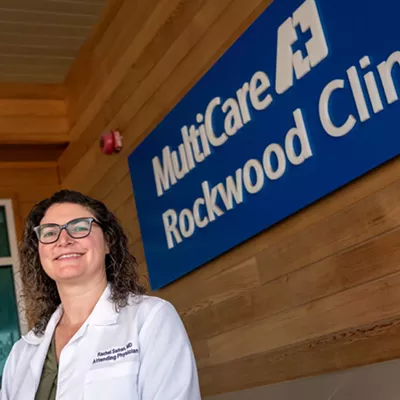QUESTION: The last couple of times I scoured my bathroom sink and bathtub, I had a sneezing fit. I suppose I'm having a reaction to the cleanser. Can you recommend something milder? -- Cassie Burton via e-mail
ANSWER: Absolutely! This question is easy to answer. Bon Ami, available in most mainstream grocery stores, is free of chlorine, perfumes and dyes. And it's been around since 1887. Its only ingredient is calcium carbonate. Their trademarked slogan reads: "When you need a little muscle but want a soft touch."
A baby chick is their symbol because chicks do not scratch for food for two or three days after hatching and Bon Ami will not scratch hard surfaces. On the Web, visit www.bonami.com. Click on "Fun Nostalgia" and read about Princess Bon Ami and the chick that never grew up. You'll flip through pages of a beautifully illustrated old-fashioned children's book reminiscent of the Walt Disney Cinderella era.
QUESTION: Every year when it comes time to plant our garden, I purchase plants from our local Farmers' Market. I love to support the small growers, but I've often thought about starting seeds from scratch, nurturing the little plants myself. When is a good time to start planting seeds indoors? Do I need growing lights, or can I simply use sunlight? (Our local food co-op started carrying seed packets recently, so I'm wondering if I'm already too late to be asking this question.) Pam Palmer, Moscow, Idaho
ANSWER: Starting your plants from scratch is rewarding and economical, but timing depends on your regional climatic conditions. For your zone, it's not too late to get started. If you want, you can jump-start seeds by sprouting them first between two wet paper towels. (If you want to end up with 18 tomato plants, start with around 25 seeds.) Making sure the towels never dry out, keep them on a plate or tray. After they sprout, gently plant each seedling in a container of soil. (If you skip the jump-start and plant seeds directly, then plant two seeds in each pot, thinning to one later on.) Starting seeds in mid-to-late February should provide you with plenty of time for growing large healthy productive plants by the time frost-free season arrives.
Inexpensive and easy tubs to use are quart-size yogurt containers. Cut six 1/2-inch holes around the sides of each container at the base. Cut one hole in the center of the bottom. Green plastic plant containers also work, but don't use clay pots, because they dry out too much. Trays, like lunchroom trays without dividers, work well as watering reservoirs. Load trays with the yogurt containers and bottom-feed the plants as needed, allowing the water to "wick" upward through the holes in the bottom of the tubs; this way, you'll never disturb the soil around the delicate young plants.
Mixing organic potting soil with a bit of native soil may provide less shock for the plants when you move them to your garden. Add a mycorrhizal fungi inoculant to the soil; it's kind of like adding acidophilus to your own intestinal tract. We use the "Plant Success" brand of mycorrhizal inoculant from Plant Revolution of Brea, California (www.plantrevolution.com or 714-990-8172). They sell their inoculant in four forms: tablets, gel, granular and soluble. The beneficial fungus is organic and it greatly enhances plant growth and vigor, attaching to the roots and extending the power of the roots to pull nutrients from the soil.
Look for southern windows where your growing plants can chase the sun, making sure to turn the plants every few days. The seedlings need warmth, and won't do well if it's colder than 65 degrees at night. If you don't want your plants to get leggy, you may want to use grow lights. You can hang the lights from the ceiling on chains, above the trays. If you're tight for space, use your imagination. Try a closet or hang the light under a piano bench or the underside of a cabinet.
Try not to get too eager about an early spring if you live in an area known for late frosts. The plants grow best when the nights are warm, so hold off until you can give the plants what they want. Starting plants in larger quart-size containers (rather than the little ponies) means that they can continue to grow in pots for several months without getting root-bound. The plants take off faster after transplanting if the roots have plenty of space. Some of the small plants available in commercial garden centers have such crowded roots that it takes the plants longer to get established in the ground. Even though they look pretty in their containers, they may not thrive right away because they are so root-bound.
Publication date: 02/06/03














